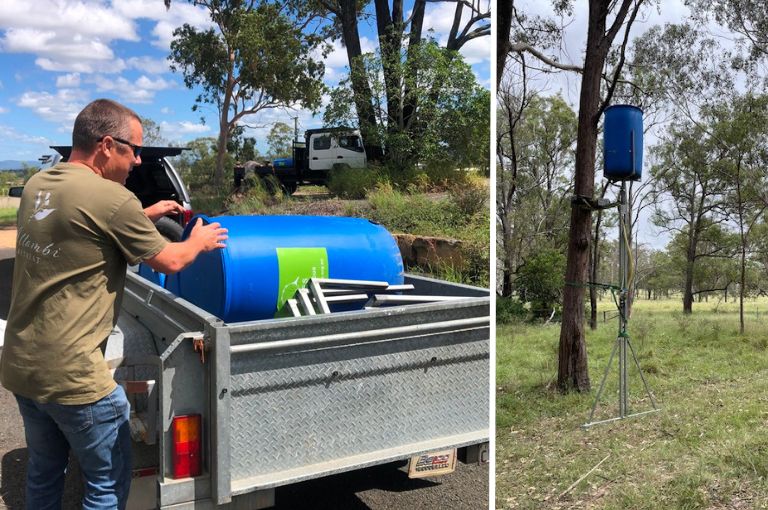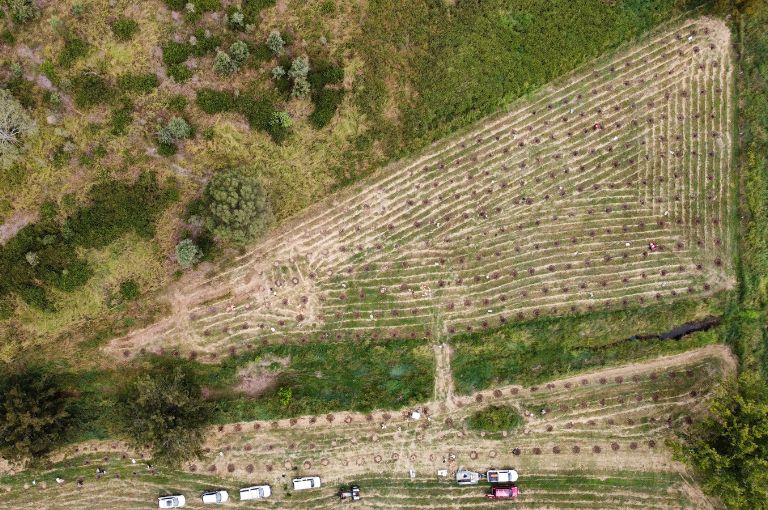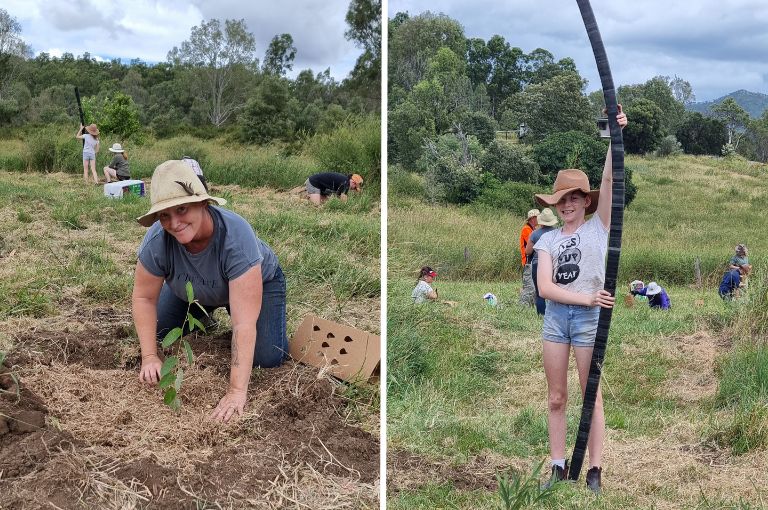
Drinkers installed to provide koalas and other native animals with a reliable source of water during droughts and after bushfires are being hoisted up into trees across south-east Queensland.
The initiative forms part of Koala Climate Corridors, a project spearheaded by the Great Eastern Ranges and the International Fund for Animal Welfare (IFAW) to help wildlife adapt and communities build resilience to climate change. Lockyer Uplands Catchment Inc (LUCI) is leading the project in the region.
Landholders have been engaged by LUCI to install 47 Tree Troff water drinkers provided by WIRES across the first climate corridor, Bunyas to Border which stretches from the Bunya Mountains to the Border Ranges.
“Bunyas to Border is about creating a corridor along the ‘western horn’ of the Greater Border Ranges that enables local wildlife to move and adapt in response to climate change and provide them with vital refugia to retreat to during bushfires, floods and droughts”, says Gary Howling, CEO of Great Eastern Ranges.
“Part of this is ensuring there are reliable sources of drinking water along the corridor that wildlife can safely access without putting themselves at risk.”
IFAW Wildlife Campaigns Manager Josey Sharrad said landholders are the essence of this project.
“With koalas now endangered, it is critical communities lend a helping hand to this species on the brink. Landholders willing to make their properties more wildlife-friendly are an invaluable part of the solution. These water stations, along with the planting of trees, will provide a crucial lifeline for koalas and other wildlife,” Ms Sharrad said.
Justine Rice, local project coordinator for Koala Climate Corridors says providing supplementary water is incredibly important, especially in south-east Queensland where there are declining koala populations and more frequent droughts.
“The aim of the wildlife drinkers is to try and prevent koalas from having to come to the ground as often where they are at a greater risk of being trampled by cattle, hit by cars or attacked by dogs. This is particularly the case in the Lockyer region where habitat has become very fragmented, and koalas need to travel a lot further across areas that don’t provide ideal habitat.
“Providing supplementary water becomes incredibly vital in those tough times when koalas are going to be most at risk and are not going to get the water they need from their food.”
As well as koalas, the drinkers will provide hydration for the corridor’s other wildlife including tree-dwelling mammals and climbing reptiles. Landholders are also being engaged to reconnect and expand core habitats by planting native vegetation and installing nest boxes.
Kia Lech, whose property sits in Mulgowie in the Lockyer Valley, is one of the landholders involved. The Lech family has installed a wildlife drinker on their farm and had 400 seedlings planted. The plants will create stepping stones of habitat for koalas, greater gliders and other animals moving between their land and neighbouring properties.

“There are not many trees on the property at the moment and we have always been interested in giving back a little of wherever we are to wildlife. It was a match made in heaven when the Bunyas to Borders project came along,” says Kia.
The drinker will be installed in an established stand of blue gums on the property where there are clear signs of glider and owl activity.
“There have been a number of droughts recently. It’s about making sure that there is some kind of water source available that native wildlife feel able to go to. It is also about encouraging the koala population to come back into those blue gums.”

Cameras have been installed around some of the drinking stations and nest boxes to monitor what animals use them.



 Media release
Media release